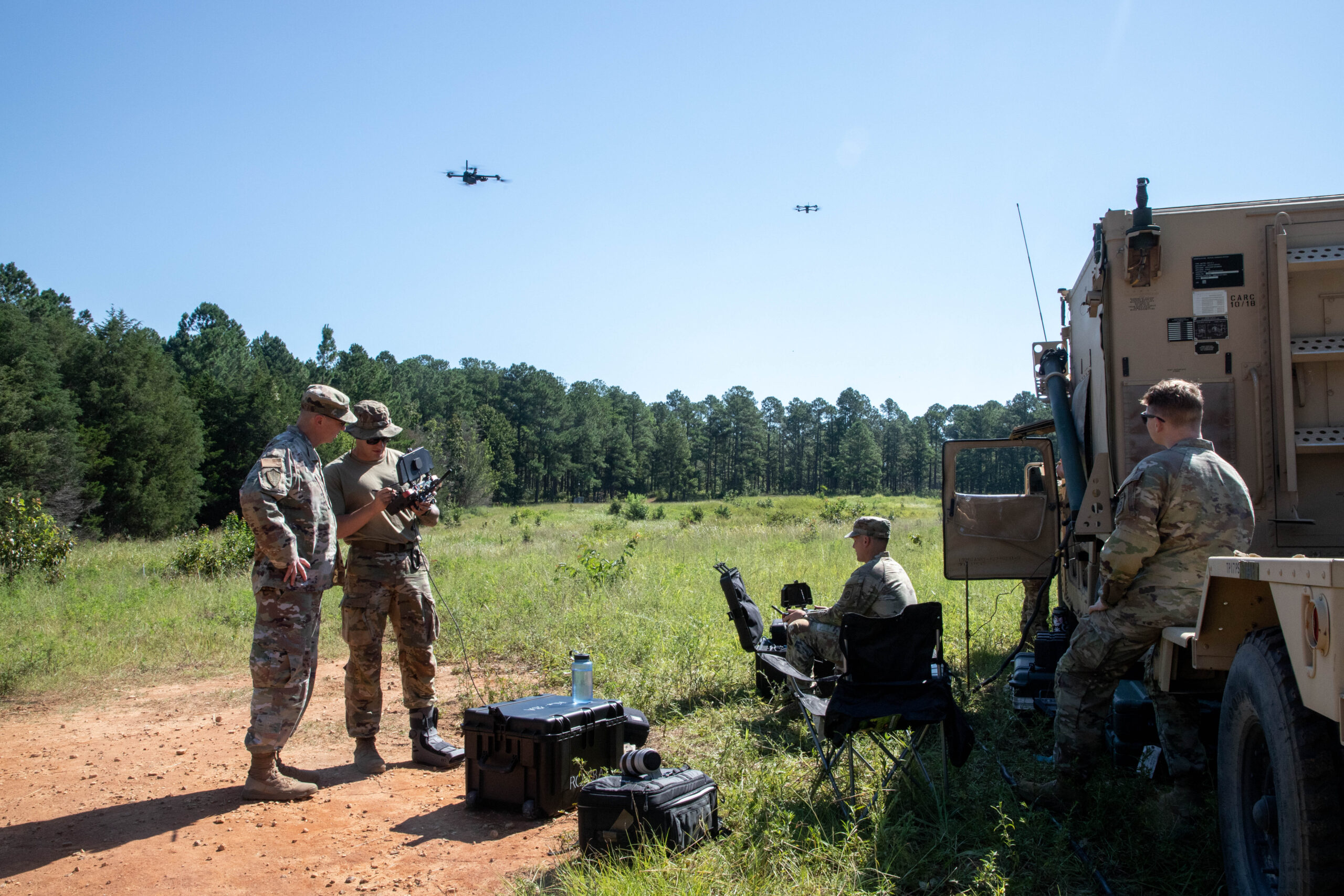

Soldiers at Fort Liberty are dropping munitions from drones while training in the field, making them the first in the Army to do so, according to Army officials.
Taking a lesson from Ukraine’s tactics in its defense against the Russian invasion, soldiers at the North Carolina base are the “first installation” where the Army can train to drop munitions from small drones, Lt. Gen Christopher Donahue, Commanding General of 18th Airborne Corps, told reporters Thursday.
“We went out and 3-D printed the right elements to be able to control various explosives – went out, tested it, got it certified and we now can go out and train on it and use it in live fire training,” Donahue said during a press briefing.
Increased drone activity in the Middle East and their use in the war between Ukraine and Russia is changing how the Army prepares for combat. Since the early days of the war, Ukraine has been using cheap, commercially available drones to drop munitions on Russian targets ranging from tanks and anti-aircraft systems to individual soldiers hiding in trenches. Birdseye videos of the drones in action have become symbolic of war in the 21st century.
Subscribe to Task & Purpose today. Get the latest military news and culture in your inbox daily.
In Iraq and Syria, soldiers have been shooting down one-way drones from Iranian-backed militias since mid-October. One of the attacks on Christmas at the al-Harir air base in Erbil, Iraq left an 82nd Airborne Division pilot with a critical head injury.
The 82nd Airborne is working with Fort Liberty Range Operations and all units at the base to create “realistic and challenging conditions” to integrate uncrewed aerial systems into all training events, said Col. Mary Ricks, a spokesperson for the 82nd Airborne.
Fort Liberty has plans to expand its already sprawling training ranges
The Army’s Directorate of Plans, Training, Mobilization, and Security is currently programmed to build seven new ranges, including a proposed Multipurpose Training Range, between fiscal years 2025 and 2031, Ricks said.
The proposed Multipurpose Training Range will host training and qualification requirements for the crews, teams, and sections of infantry, armor, and combat aviation units. The range would support “dismounted infantry squad tactical live-fire operations, either independently of, or simultaneously with supporting vehicles,” Ricks said.
The range will also be used to train and test a long list of traditional Army skills and tactics used by armor, infantry, and aviation teams. But the addition of tactical drones, controlled by soldiers embedded with traditional units, will become a staple of future training.
An article from Brookings Institute, a Washington DC think tank said that the Army’s concepts for multidomain land warfare should be adapted to include low-cost, autonomous, attritable systems at the theater, corps, division, and brigade levels.
They also suggested that the Army “highlight tactical scenarios where many small, cheap, attritable, Replicator-type systems could be used, such as during joint force entry, wet gap crossing (projecting combat power across a water obstacle), or combined arms breach operations.”
The Army’s push follows the Defense Department’s Replicator initiative which aims to field thousands of autonomous systems in the next two years. The program emphasizes the use of small, attritable systems that are available as commercial-off-the-shelf — another big strategic push within the DoD.
The Army has also begun incorporating electronic warfare — which has been used in Ukraine to take down drones — into initial entry training.
The latest on Task & Purpose
- Army officer gets reprimand for secret camera in dressing room
- Two Army Rangers made the bracelet Taylor Swift wore at AFC Championship game
- 5 Marines who died in CH-53E helicopter crash identified
- Police find rocket from nuclear missile in Washington home
- Army orders hundreds of counter-drone Coyote munitions amid attacks on US bases